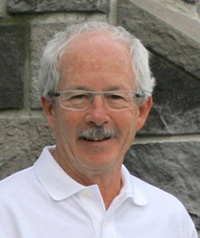CAR-T And The Voice Of The Patient

By Erin Harris, Editor-In-Chief, Cell & Gene
Follow Me On Twitter @ErinHarris_1

By now, you know that Cell & Gene is committed to delivering the most up-to-date information about the advancements in cell and gene therapies to our readers. We are also committed to “the voice of the patient” — editorial that highlights real-life accounts of patients’ unique experiences with cellular therapies that can help you, our readers, in your role. As such, Cell & Gene is privileged to have Robert Levis on our Editorial Advisory Board. Bob was diagnosed with Chronic Lymphocytic Leukemia (CLL) in 2002. He continued to “watch & wait” until 2008 when he moved back to the U.S. and underwent FCR (fludarabine, cytoxan, rituxan) treatment for his CLL. He maintained a complete remission for 3+ years when his CLL relapsed to the most aggressive 17p del form. Bob enrolled in a Pharmacyclics trial (ibrutinib vs. ofatumumab) at Penn Medicine in Philadelphia, PA, and was randomized to the ofatumumab arm. The ofatumumab treatment did not stop the progression of his CLL and he was denied crossover access to ibrutinib. Facing death while alive on hemoglobin and platelet transfusions, he enrolled as one of the early experimental trial participants at Penn Medicine for Dr. Carl June’s CAR-T therapy. He received his genetically modified T-cells on March 12, 2013 and was in complete remission for another 3+ years. A second CAR-T therapy during 2017 at Penn Medicine reduced the CLL in his bone marrow to < 5.0 %.
Here, Bob answers my questions about his message to pharma executives, researchers, scientists, and doctors, what the industry should consider when developing new payment structures, and more.
Harris: What is your message to pharma executives, researchers, scientists and doctors who work on gene therapies?
 Levis: As a double CAR-T patient for CLL, my message to pharma executives, researchers, scientists and doctors is different for each one. To researchers and scientists, I say thank you. Not only do these intelligent individuals go through several years of biomedical education, they then dedicate their lives to the complex work of cellular science. The researchers and scientists who remain committed to this field of work know full well that their work will revolutionize modern medicine to save lives.
Levis: As a double CAR-T patient for CLL, my message to pharma executives, researchers, scientists and doctors is different for each one. To researchers and scientists, I say thank you. Not only do these intelligent individuals go through several years of biomedical education, they then dedicate their lives to the complex work of cellular science. The researchers and scientists who remain committed to this field of work know full well that their work will revolutionize modern medicine to save lives.
Pharma executives have a different responsibility. They lead major corporations with a primary goal to increase shareholder value. Patients are, in my opinion, seldom on their minds. That said, there is a growing enlightenment by the biopharma industry that patient perspectives need to be considered in the development of company plans and goals. Patients are not only beneficiaries of biopharma treatments and cures, but we are also customers. As a patient, I recognize the need for the biopharma industry to make a reasonable return on their investment. I also realize that it must be a complicated decision for biopharma on how to price their products given competitive forces, amenable market, and duration viability of any given treatment. My message to biopharma executives — once you achieve an acceptable return for your shareholders with ample funds for ongoing R&D, give patients, insurance companies, and CMS (Center for Medicare & Medicaid Services) and providers a break with more affordable access to your proven immunotherapy treatments.
Doctors play a critical role in the management and advancement of newly developed gene therapies. The doctors I know are cautious about recommending CAR-T to patients and do so only when other treatments have failed. As one of my doctors said relative to CAR-T, “This is probably not even the end of the beginning yet.” My message to doctors — thank you for your focus on patients as a person and for educating us on our conditions and options. Please include deep sequence genetic testing to patient profiles to “fine tune” our conditions and treatments. Continue to pioneer gene therapies with appropriate patient selection without cherry picking to gain FDA approval.
And finally, thank you to patients who have volunteered to participate in gene therapy trials to hopefully save lives and also to advance the science. The data from our experimental therapies in the capable hands of the researchers and scientists will eventually enable a cure for cancer.
Harris: What is the financial burden to the CLL patient, and what should the industry understand when it’s considering/developing new payment structures?
Levis: Like many patients with CLL (Chronic Lympocytic Leukemia), I am on a daily oral dose of Imbruvica (ibrutinib), a kinase inhibitor that blocks a genetic pathway inhibiting the formation of cancerous lymphocytes. Imbruvica is a wonder drug, which has transformed the treatment of CLL to extend and save lives, including mine. The annual cost of Imbruvia to patients and their insurance companies is ~$100,000. I do not know how many CLL patients are on Imbruvica, but I do know that there are ~15,000 new cases of CLL in the U.S. every year.
I am thankful to the developers of Imbruvica who probably spent several hundred million dollars on their research and clinical trials to get the drug FDA approved. But the price of Imbruvica is not based on a return on the original R&D investment and trials, but rather it is based on market potential. As I understand it, another biopharma company with greater manufacturing (in China) and infrastructure for distribution of Imbruvica purchased the rights to the drug from the developer for ~$34 billion. So now the cost of Imbruvia to patients is based on a much higher number and ROI criteria and that is the price we pay for as long as the drug works.
New payment structures? Patients are at the mercy of biopharma industry ethics on what is fair and reasonable to charge patients for their treatments and cures while maintaining acceptable returns to cover costs, advance their forward plans and profits. Medicaid, Medicare (CMS) and our insurance companies have some leverage to negotiate pricing. Patients, on the other hand, as experimental clinical trial participants and potential beneficiaries, depend on biopharma and government policies, which determine what (not how) they expect patients to pay for cancer treatments. That’s just one example. I’m sure there are numerous examples and that it is much more complicated than I know.
I am hopeful that new cellular therapies, including CAR-T, can offer durable remissions and cures for various cancers for a one-time fee. The proposed charge for currently FDA-approved CAR-T therapies for acute lymphocytic leukemia (ALL) and non-Hodgkin’s lymphoma (NHL) is a big number ~$350,000. Insurance companies and CMS are likely wrestling with coverage for single-therapy cures. Therein lies a question — do these new one-shot cellular therapies actually result in absolute cures? Certainly, lives have been saved, but more time and data are required to confirm sustainability of results. Once perfected, these revolutionary cures, even at high one-time charges, have the potential to reduce the cost of cancer treatment by eliminating costs of endless maintenance treatments — the combination of chemotherapy, radiation, and costly oral kinase inhibitors. Cellular therapies may one day evolve as maintenance treatments with periodic infusions to contain a patient’s cancer, ideally at more reasonable costs.
Harris: How difficult or easy was it for you to learn about clinical trials? What can researchers, practitioners, etc., do to help patients gain awareness of trials?
Levis: Diagnosed with CLL (chronic lymphocytic leukemia) in 2002, following several years of slow progression, I was treated with an FDA-approved combo therapy (fludarabine, cytoxan, rituximab – FCR) in 2008 at my local hospital. FCR for CLL had recently been headlined as the best option based on clinical trials at MD Anderson. The therapy worked until 2012 when I relapsed with a more aggressive form of CLL. My local hematologist/oncologist told me, “We have nothing more to offer you here. I recommend that you explore clinical trials at other major research hospitals.” At that point I started to dig deeper into my condition to learn who and where I could go to for experimental treatment of CLL.
My early research on clinical trials was discouraging. From what I had read, most clinical trials were inconclusive and only offered months, not years, of progression-free survival but that was changing, especially for blood cancers. With the assistance from Emerging Med (www.emergingmed.com) and ClinicalTrials.gov (a database of privately and publicly funded clinical studies conducted around the world), I researched trials for CLL and found that two university-based hospitals were prominent in CLL and blood cancer clinical trials – Penn Medicine in Philadelphia, PA (close to home) and Ohio State in Columbus, Ohio. I registered at both hospitals with CLL specialists. This decision saved my life.
It is critically important for any cancer patient to be working with specialists in their field. Not only do they have extensive patient experience but, they use genetic testing to identify specific cancer markers for customized treatments and clinical trials. Additionally, a patient can connect with the researchers working on new treatments and cures for their cancer. This path led me to Penn Medicine as one of the early CAR-T experimental patients.
I am still an experimental patient with CLL at Penn Medicine. I have another bone marrow biopsy scheduled there soon to check the status of my second CAR-T. While I am hopeful for news of stable disease or better, remission, I also hope that my data points lead to the advancement of cellular therapy.
